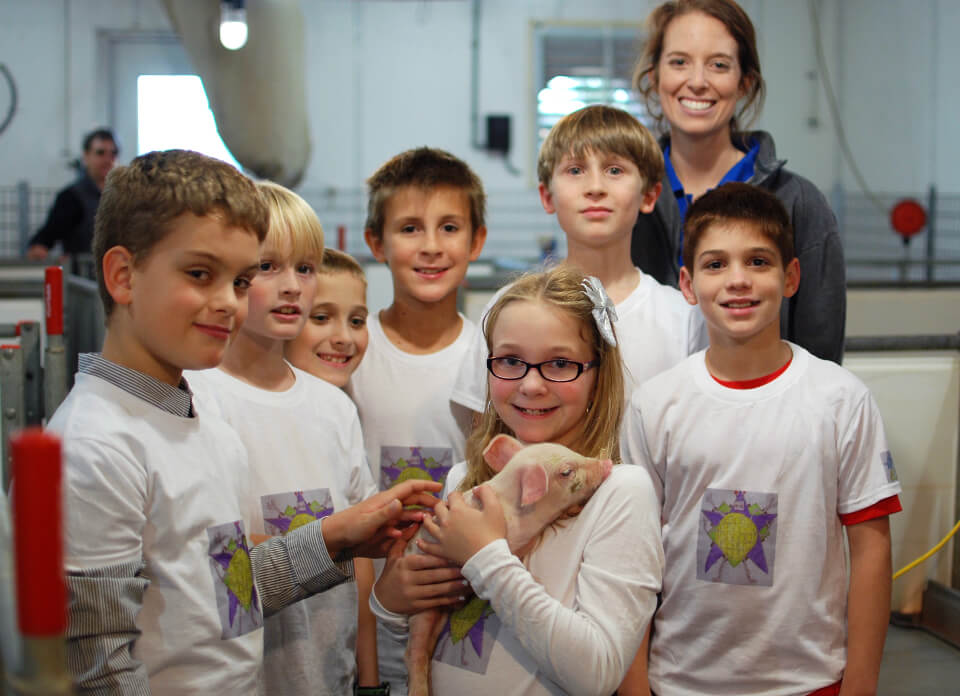Chester County Students Choose Swine for FIRST LEGO League Research Project
The giant sows came up close, curious, some poking their snouts through the railings, as the eight elementary school students walked down the aisle, making their way through the enclosed barn.
These kids weren’t there just to see the pigs. They were on a scientific research quest.
Talking with excitement as they explored Penn Vet’s Swine Teaching and Research Center, the children considered the situation. What could be better about this environment for the sows? What could they design to make a difference? How could they make it work?
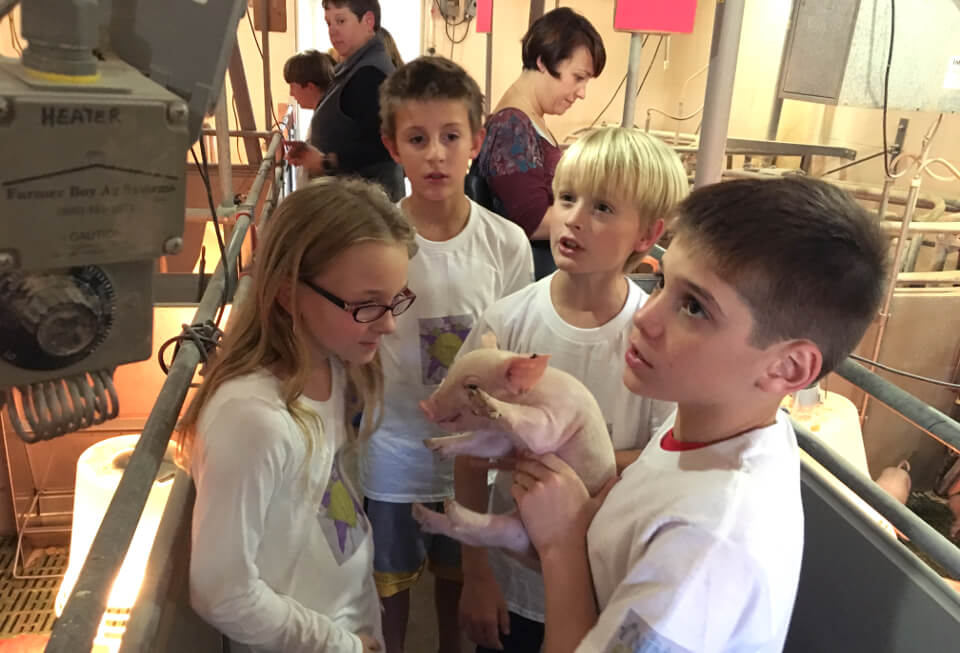
The questions are at the heart of an international competition, FIRST LEGO League, and the fourth and fifth graders from Hillendale and Pocopson Elementary Schools in Chester County are a team, the “Robotic Waffles.” They live near New Bolton Center, Penn Vet’s large animal hospital and campus where the Swine Center is located.
“All the kids are pig crazy now,” said Cora Forgeng, a team coach, with Denise Palahunik, both mothers of team members. “It is an experience the kids will remember for their entire lives.”
The Challenge
FIRST LEGO League each year releases a Challenge, which is based on a real-world scientific topic. This year’s theme is Animal Allies. According to the League, more than 28,000 teams of students, ages nine to 16, in 80 countries will participate and learn to think like scientists and engineers.
Penn Engineering for the past seven years has been a partner in the FIRST LEGO League Challenge, in charge of managing about 200 teams and the competitions in the Southeast Pennsylvania region, which includes five counties around Philadelphia.
The Robotic Waffles team is one of the youngest, with participants ages nine and 10. Other teams also looked to Penn for their research projects, including one that chose the Penn Vet Working Dog Center.
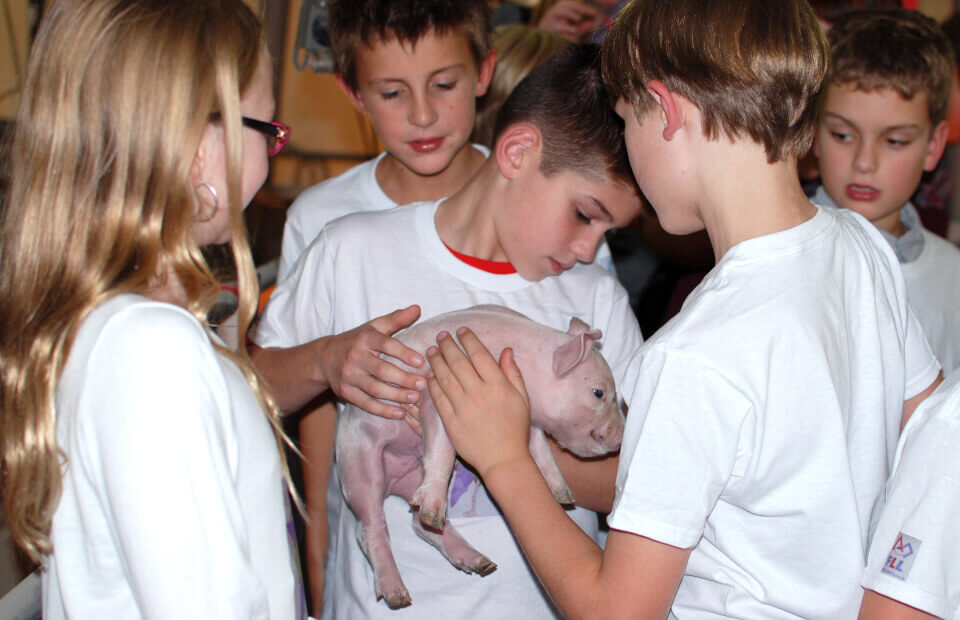
“We believe this program is a very good way to introduce these young students to engineering, and inspire them to follow this career path, and also give them the skills to do so,” said Daniel Ueda, Associate Director for Education and Outreach for Penn Engineering’s GRASP Lab (General Robotics, Automation, Sensing & Perception).
“They are learning research skills, mechanical design skills, and programming skills,” he continued. “They are also learning the engineering design process, getting an excellent foundation for real engineering.”
The Challenge has three parts that are evaluated by a panel of judges:
- Project: choose and design a solution to a real-world problem involving animals
- Robot Game: build, test, and program an autonomous robot using LEGO Mindstorms® technology to solve a set of pre-designed missions, and explain the strategy
- Core Values: demonstrate discovery, teamwork, cooperation, and professionalism
Solving a Pig Problem
The Robotic Waffles chose Penn Vet’s Swine Center for the project portion of the competition. The team had clearly done extensive research, asking specific questions about the alternative housing model developed at the Swine Center, where sows are loose, not in restrictive gestation crates.
“What makes pigs happy during the day?” “Why do pigs like to nest?” “Why do pigs have feeding systems and how do they work?” “What do you feed the pigs and do they enjoy their food?” “Why do people want to make pigs better?”
Lauren Cichocki, who manages the herd at the Swine Center, answered the many questions, and took the group on a tour. They went through the main housing area where about 200 sows live, to the farrowing pens to see sows with piglets. In another area, the children had a chance to help move a group of young pigs, using a board to guide them down the hallway.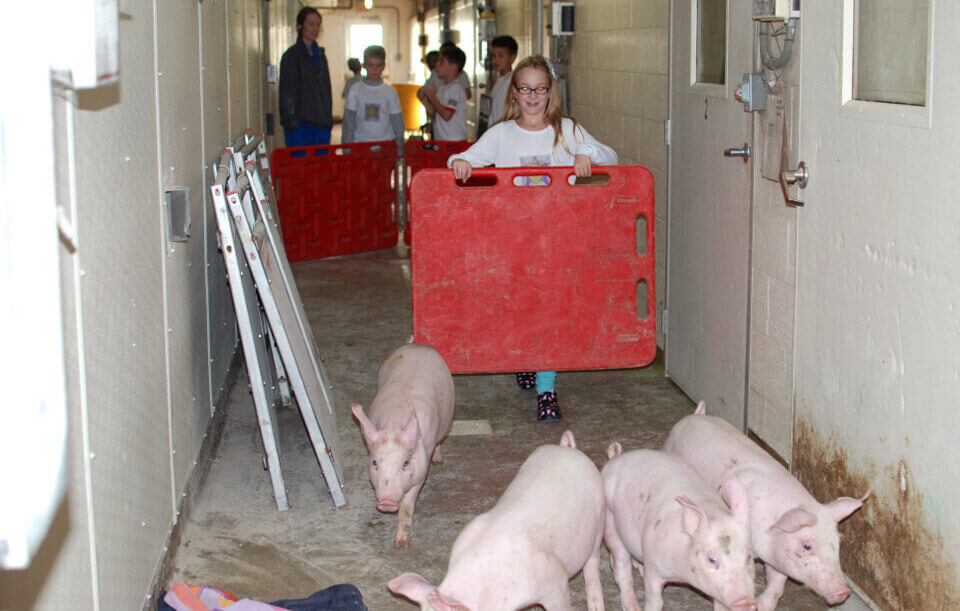
All the while, the students were thinking about a problem to solve. An obvious choice would have been new ideas for toys to keep the pigs engaged, like the rope knots and rubber hoses they like to chew on for fun.
But the Waffles group took on a bigger challenge, the slatted flooring, because the pigs’ small hooves sometimes get caught in the open grooves, designed to let manure fall through to a pit below.
A few weeks after their tour, the group came back to present their project, as they would to the competition judges, with their solution: yoga mats to cover the slats. They performed a skit featuring students as the three little pigs, explained a trifold poster with illustrations of their invention, and demonstrated a LEGO model of a robot.
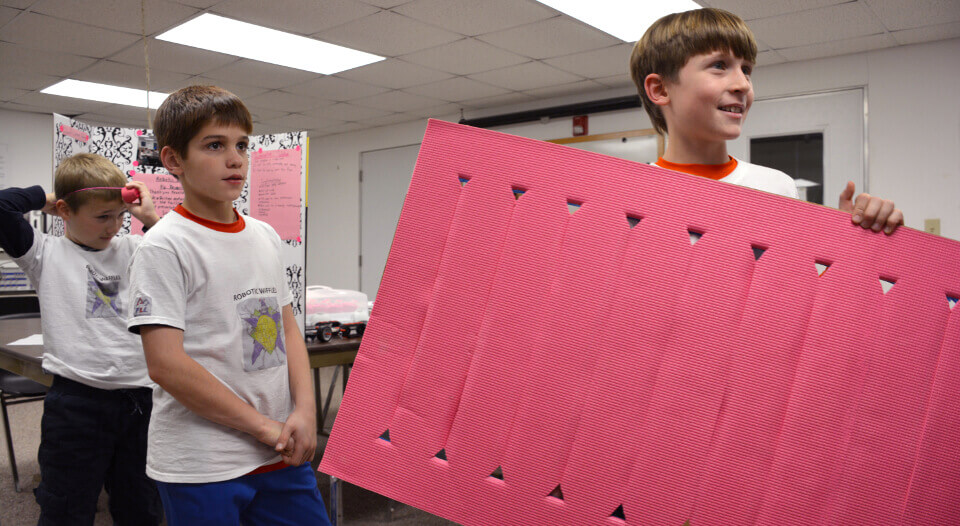
“Pigs get unhappy when their hooves get stuck. We have an innovative plan,” student Daniel Palahunik said in the presentation. “We will push mats into the slats and make a robot to clean the manure.”
Cichocki told the students the idea was creative. “I think they did an amazing job,” she said after the presentation. “I was so impressed.”
Flooring issues in the swine industry are a constant challenge because of injuries to the sows and the push for more open sow housing, Cichocki said.
“I wish all pigs could walk on yoga mats,” she said. “It could help with lameness problems.”
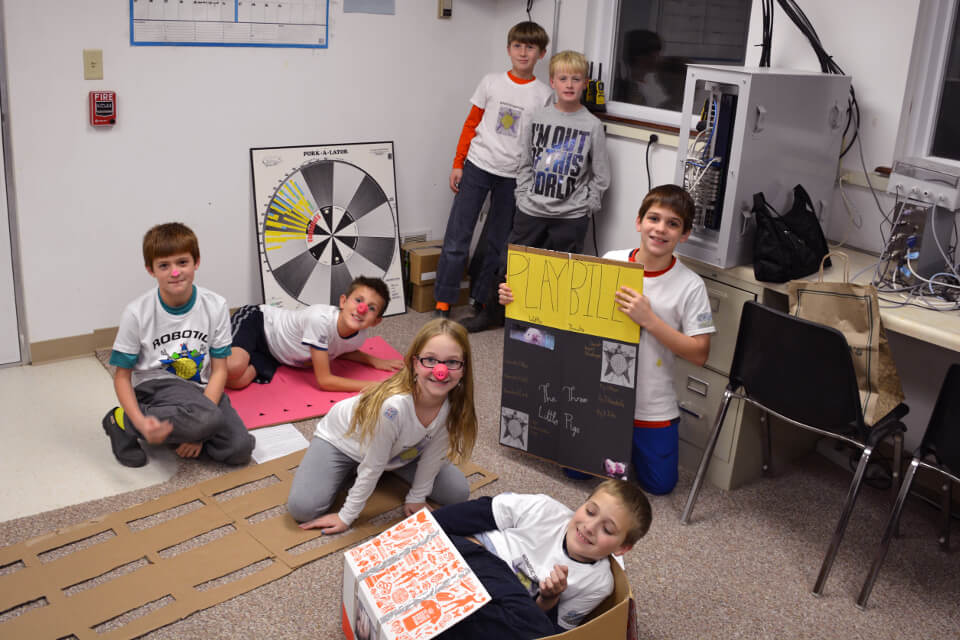
Dr. Meggan Hain, a veterinarian on New Bolton Center’s Field Service team, was also present for the demonstration. She suggested the students add to their presentation measurement of the effectiveness of the new flooring, checking to see how many hooves get stuck with the yoga mats, and without. Cichocki suggested use of a video camera, like the veterinarians do every day for their research at the Swine Center.
It’s just that kind of engagement and teamwork that the competition encourages. “They are identifying a need and they need feedback about the solution,” Ueda said.
The Robotic Waffles team includes fourth-graders Ethan Bockoven, Will Neuberger, John Albans, Daniel Palahunik, Cael Ammon, and Annabella Ammon, all fourth graders at Hillendale Elementary, and Zach Tomaszewicz, grade four, and Alex Tomaszewicz, grade five, at Pocopson Elementary.
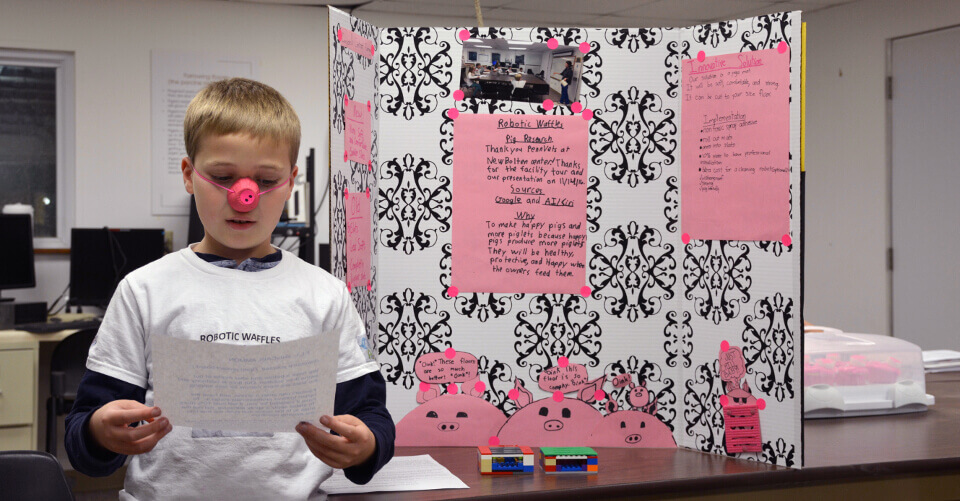
“I’ve been so impressed, watching them do the research and follow it through, being so engaged and seeing the smiles on their faces as they worked together as a team,” coach Forgeng said. “They had so much fun.”
Community outreach is integral to the Swine Center’s mission, said Dr. Thomas Parsons, Director of the Swine Center and Associate Professor of Swine Production Medicine. “We are delighted to have this unique opportunity to share our work and talk with these young students about animal agriculture and where their food comes from,” he said.
Penn Engineering Partnership
The GRASP Lab invests about $40,000 each year into the competition, funded through grants and other financial support. The staff sets up the region’s 10 qualifying competitions in December and January, and hosts the regional competition at Penn’s Irvine Auditorium on February 4.
They consult with coaches and teams to give advice, and stage scrimmages. Penn Engineering students, many of them veterans of the competition, help build the LEGO models used for the robotic competition, and serve as mentors, judges, and referees.
The Lab also fully funds and supports 38 teams in Philadelphia public schools, in a partnership with LEGO, and holds a special competition for them.
“For Penn, this is a way we can expose the students to a great engineering school,” Ueda said. “This project involves the dissemination of research and the impact on community, inspiring future engineers.”
